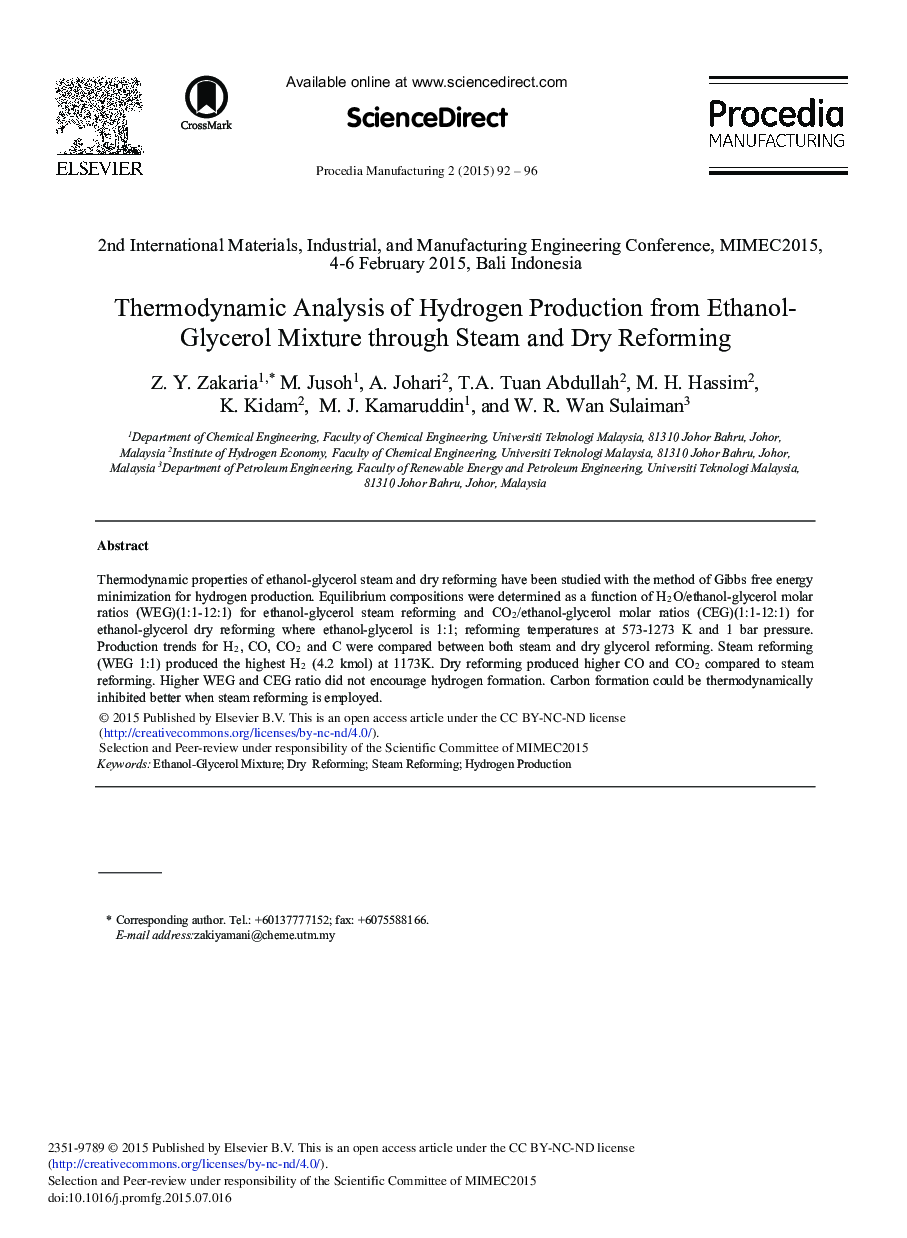| Article ID | Journal | Published Year | Pages | File Type |
|---|---|---|---|---|
| 1143587 | Procedia Manufacturing | 2015 | 5 Pages |
Thermodynamic properties of ethanol-glycerol steam and dry reforming have been studied with the method of Gibbs free energy minimization for hydrogen production. Equilibrium compositions were determined as a function of H2O/ethanol-glycerol molar ratios (WEG)(1:1-12:1) for ethanol-glycerol steam reforming and CO2/ethanol-glycerol molar ratios (CEG)(1:1-12:1) for ethanol-glycerol dry reforming where ethanol-glycerol is 1:1; reforming temperatures at 573-1273 K and 1 bar pressure. Production trends for H2, CO, CO2 and C were compared between both steam and dry glycerol reforming. Steam reforming (WEG 1:1) produced the highest H2 (4.2 kmol) at 1173K. Dry reforming produced higher CO and CO2 compared to steam reforming. Higher WEG and CEG ratio did not encourage hydrogen formation. Carbon formation could be thermodynamically inhibited better when steam reforming is employed.
